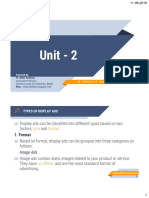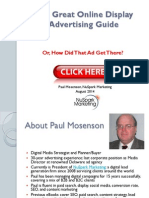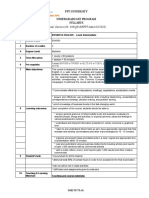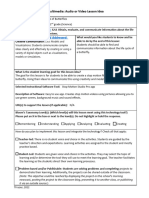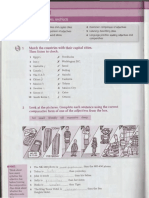0% found this document useful (0 votes)
73 views50 pagesModule 2 - Display Advertising
This document provides an overview of display advertising. It defines display advertising as banner ads that allow targeting audiences online across devices. It discusses what makes an effective display ad, such as simple designs, clear information, and specific landing pages. It also covers how to target display ads through behavioral, geo-location, contextual, and retargeting methods. Finally, it discusses how to measure the success of display ads through metrics like impressions, clicks, time on site, and form submissions.
Uploaded by
Jamuna SCopyright
© © All Rights Reserved
We take content rights seriously. If you suspect this is your content, claim it here.
Available Formats
Download as PDF, TXT or read online on Scribd
0% found this document useful (0 votes)
73 views50 pagesModule 2 - Display Advertising
This document provides an overview of display advertising. It defines display advertising as banner ads that allow targeting audiences online across devices. It discusses what makes an effective display ad, such as simple designs, clear information, and specific landing pages. It also covers how to target display ads through behavioral, geo-location, contextual, and retargeting methods. Finally, it discusses how to measure the success of display ads through metrics like impressions, clicks, time on site, and form submissions.
Uploaded by
Jamuna SCopyright
© © All Rights Reserved
We take content rights seriously. If you suspect this is your content, claim it here.
Available Formats
Download as PDF, TXT or read online on Scribd
/ 50








































